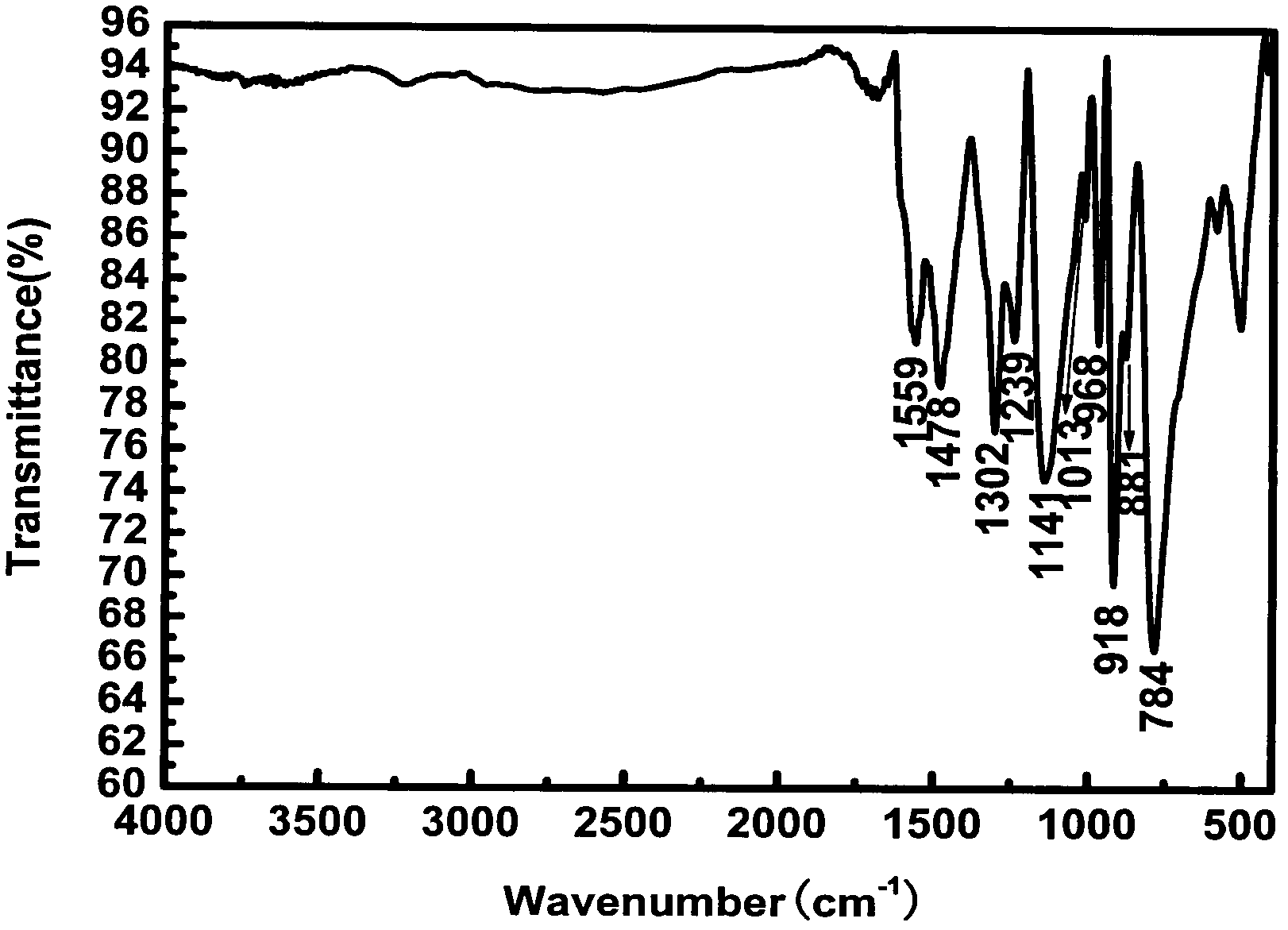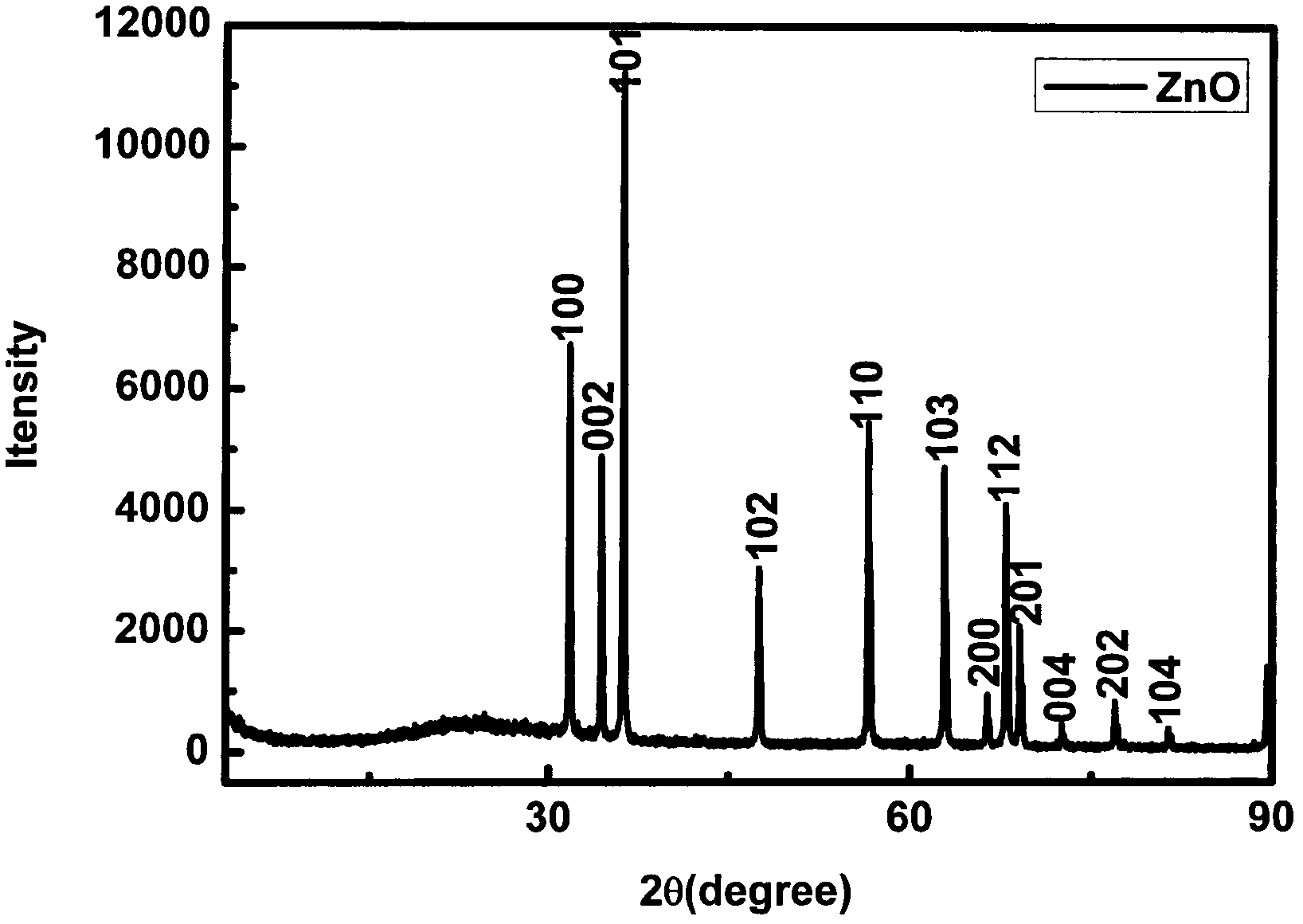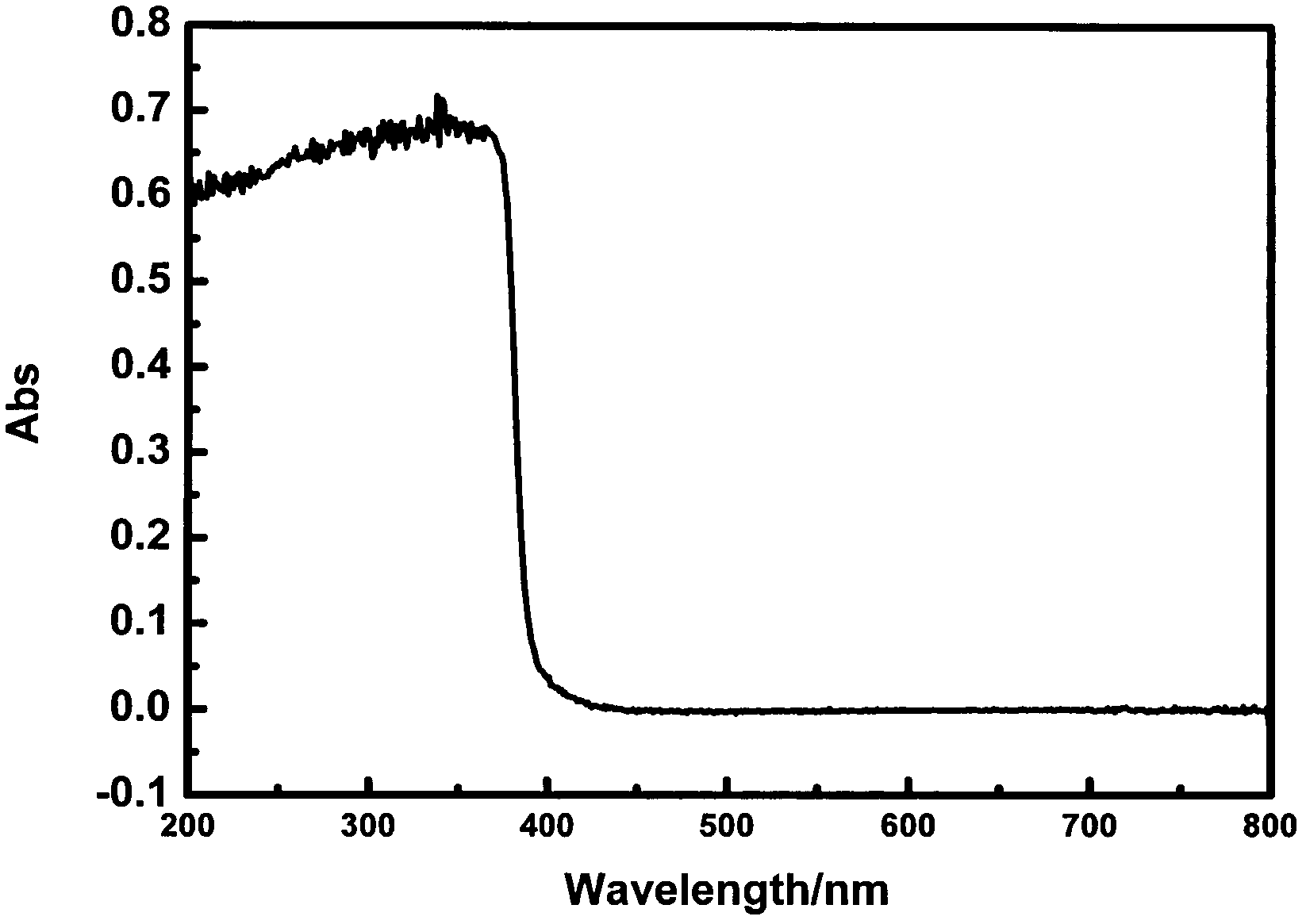Preparation method of photoinduction nano alternative-current power generator based on zinc oxide/ polyaniline/zinc oxide
An alternator, zinc oxide technology, applied in the direction of light radiation generator, generator/motor, etc., to achieve the effect of simple preparation process, single shape and high purity
- Summary
- Abstract
- Description
- Claims
- Application Information
AI Technical Summary
Problems solved by technology
Method used
Image
Examples
Embodiment 1
[0026] 1. Treatment of conductive glass:
[0027] The ITO conductive glass used as the working electrode was pre-cut into strips of 2cm×1cm, firstly ultrasonicated in absolute ethanol for 15 minutes, and then ultrasonicated in ethanol aqueous solution of sodium hydroxide (the volume ratio of ethanol to water was 1:1) After 15 minutes, ultrasonically clean with absolute ethanol and deionized water respectively, and finally blow dry with nitrogen for use.
[0028] 2. Synthesis of polyaniline nanofibers: carried out in a 50 ml glass container. 3.28 g K 2 S 2 o 8 and 5 g H 4 SiW 12 o 40 The acid was dissolved in 20 mL of deionized water and stirred evenly in an ice bath to form mixture 1. Subsequently, 10 drops of aniline were pipetted with a dropper and dissolved in 20 ml of chloroform, and stirred evenly in an ice bath to form a mixture 2. Mixture 1 was carefully added to Mixture 2 to form a liquid-liquid interface. The interfacial reaction was carried out at 0°C-5°C fo...
Embodiment 2
[0032] 1. Treatment of conductive glass:
[0033] The ITO conductive glass used as the working electrode was pre-cut into strips of 2cm×1cm, firstly ultrasonicated in absolute ethanol for 15 minutes, and then ultrasonicated in ethanol aqueous solution of sodium hydroxide (the volume ratio of ethanol to water was 1:1) After 15 minutes, ultrasonically clean with absolute ethanol and deionized water respectively, and finally blow dry with nitrogen for use.
[0034] 2. Synthesis of polyaniline nanofibers:
[0035] Do this in a 50ml glass container. 3.28 g K 2 S 2 o 8 and 5 g H 4 SiW 12 o 40 The acid was dissolved in 20 mL of deionized water and stirred evenly in an ice bath to form mixture 1. Subsequently, 10 drops of aniline were pipetted with a dropper and dissolved in 20 ml of chloroform, and stirred evenly in an ice bath to form a mixture 2. Mixture 1 was carefully added to Mixture 2 to form a liquid-liquid interface. The interfacial reaction was carried out at 0-5°C...
Embodiment 3
[0039] 1. Treatment of conductive glass:
[0040] The ITO conductive glass used as the working electrode was pre-cut into strips of 2cm×1cm, firstly ultrasonicated in absolute ethanol for 15 minutes, and then ultrasonicated in ethanol aqueous solution of sodium hydroxide (the volume ratio of ethanol to water was 1:1) After 15 minutes, ultrasonically clean with absolute ethanol and deionized water respectively, and finally blow dry with nitrogen for use.
[0041] 2. Synthesis of polyaniline nanofibers:
[0042] Do this in a 50ml glass container. 3.28 g K 2 S 2 o 8 and 5 g H 4 SiW 12 o 40 The acid was dissolved in 20 mL of deionized water and stirred evenly in an ice bath to form mixture 1. Subsequently, 10 drops of aniline were pipetted with a dropper and dissolved in 20 ml of chloroform, and stirred evenly in an ice bath to form a mixture 2. Mixture 1 was carefully added to Mixture 2 to form a liquid-liquid interface. The interfacial reaction was carried out at -2°C ...
PUM
 Login to View More
Login to View More Abstract
Description
Claims
Application Information
 Login to View More
Login to View More - R&D
- Intellectual Property
- Life Sciences
- Materials
- Tech Scout
- Unparalleled Data Quality
- Higher Quality Content
- 60% Fewer Hallucinations
Browse by: Latest US Patents, China's latest patents, Technical Efficacy Thesaurus, Application Domain, Technology Topic, Popular Technical Reports.
© 2025 PatSnap. All rights reserved.Legal|Privacy policy|Modern Slavery Act Transparency Statement|Sitemap|About US| Contact US: help@patsnap.com



